What A Way To Spend Christmas!

What a way to spend Christmas!
More Posts from Curiositytherover and Others


Flowers could be blooming on the International Space Station after the New Year
Having already grown lettuce (images above) on the International Space Station, astronauts are now attempting to grow the first flowering plants. On 16th November, NASA astronaut Kjell Lindgren activated the plant growth system named Veggie and its rooting “pillows” containing Zinnia seeds.
“Growing a flowering crop is more challenging than growing a vegetative crop such as lettuce,” said Gioia Massa, NASA Kennedy Space Center payload scientist for Veggie. “Lighting and other environmental parameters are more critical.”
Lindgren will turn on the red, blue and green LED lights, activate the water and nutrient system to Veggie, and monitor the plant growth. The experimental flowers are expected to bloom early 2016, after 60 days of growth.
“Growing the Zinnia plants will help advance our knowledge of how plants flower in the Veggie growth system, and will enable fruiting plants like tomatoes to be grown and eaten in space using Veggie as the in-orbit garden,” said Trent Smith, Veggie program manager at Kennedy. Growing tomato plants on the space station is planned for 2017.
Image credit: NASA/Gioia Massa
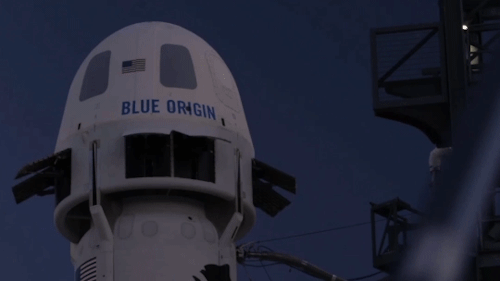
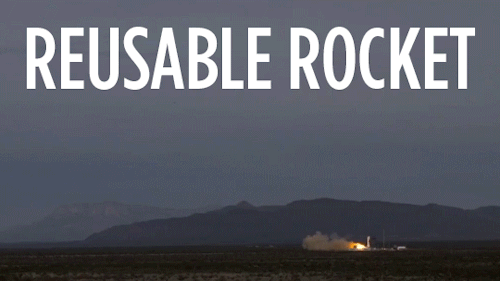

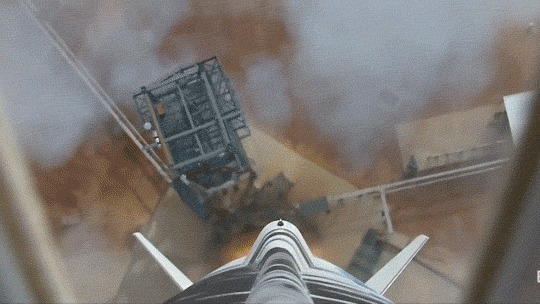
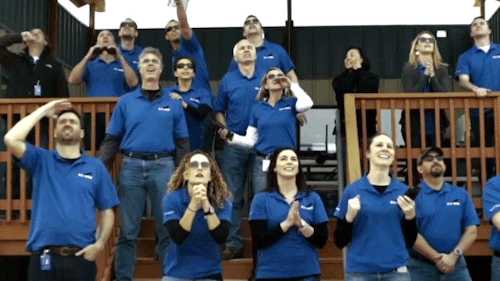
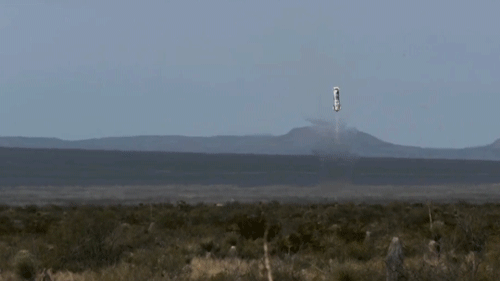

Via his very first tweet, Jeff Bezos announced that his spaceflight company has accomplished a historic first. It sent a rocket to the edge of space and then landed that rocket’s main fuselage gently on dry land.
Most things humans have sent into space are pushed up there by a disposable rocket. Once the rockets do their job, they fall back to earth, usually worse for wear. They have to be rebuilt each time (though sometimes their parts can be reused). That’s an expensive process, especially if you are a private company hoping to bring tourists to space. Virgin Atlantic, Elon Musk’s company SpaceX and Bezos’ Blue Origin all want to do just that.
And now Blue Origin has paved the way, landing its rocket on its second attempt (the propulsion module was destroyed when they first tried). Here’s the video in full:
Elon Musk responded to the news on Twitter. He pointed out that it requires much greater speed to actually reach orbit than it does to reach the edge of space. (Phil Plait has some good analysis of the exchange over on his Bad Astronomy blog.)
Still, it’s a pretty amazing accomplishment.
So i was carrying a chemical that was 12 on the pH scale and it fell
I guess you could say I dropped the base

Following cancer with tiny magnets
Life-saving surgery and treatments rely on doctors being able to accurately track the spread of cancers.
A new device that uses iron particles and a magnetic probe will allow clinicians to narrow down exactly which lymph nodes tumours spread to.
Developed by Aidan Cousins with colleagues at the University of South Australia, the novel approach is more sensitive and safer than existing methods for monitoring cancer.
“Pre-clinical trials of our approach suggest it gives a very clear picture of where tumours are most likely to spread,” Aidan explained.
“It will allow subsequent surgery and treatment options to be refined for better standards of care and improved prognosis.”
The technique involves injecting biodegradable iron particles at the primary site of a tumour, from where – as part of their normal surveillance activities – cells of the immune system transport them to the draining lymph nodes.
More information: A. Cousins et al. Novel Handheld Magnetometer Probe Based on Magnetic Tunnelling Junction Sensors for Intraoperative Sentinel Lymph Node Identification, Scientific Reports (2015). DOI: 10.1038/srep10842
Electron microscopic image of a single human lymphocyte. Credit: Dr. Triche National Cancer Institute

Say ‘Hello’ to the Remote Controlled Gun-Wielding, Rocket Launching Vehicle
Cygnus Cargo Craft: What’s Onboard?

New experiments are scheduled to arrive to the International Space Station with the launch of Orbital ATK’s Cygnus cargo spacecraft on Tuesday. These science payloads will study fires, meteors, regolith, adhesion and 3-D printing in microgravity.
Take a look at the experiments:
Saffire-I

What is it? What happens when you set a fire in space? The Spacecraft Fire Experiment-I (Saffire-I) will find out!
How does it work? This experiment will intentionally light a large-scale fire inside an empty Cygnus resupply vehicle after it leaves the space station and before it re-enters Earth’s atmosphere.
Why is it important? The Saffire-I investigation provides a new way to study a realistic fire on an exploration vehicle, which has not been possible in the past because the risks for performing studies on manned spacecraft are too high. Instruments on the returning Cygnus will measure flame growth, oxygen use and more.
Meteor

What is it? A less heated investigation, Meteor Composition Determination (Meteor) will enable the first space-based observations of meteors entering Earth’s atmosphere from space. Meteors are somewhat rare and are difficult to monitor from the ground because of Earth’s atmosphere.
How does it work? This investigation uses high-resolution video and image analysis of the atmosphere to acquire the physical and chemical properties of the meteoroid dust, such as size, density and chemical composition.
Why is it important? Studying the elemental composition of meteors adds to our understanding of how the planets developed, and continuous measurement of meteor interactions with Earth’s atmosphere could spot previously unforeseen meteors.
Strata-1

What is it? A more “grounded” investigation will study the properties and behavior of regolith, the impact-shatterd “soil” found on asteroids, comets, the moon and other airless worlds.
How does it work? The Strata-1 experimental facility exposes a series of regolith simulants, including pulverized meteorite material, glass beads, and regolith simulants composed of terrestrial materials and stored in multiple transparent tubes, to prolonged microgravity on the space station. Scientists will monitor changes in regolith layers and layering, size sorting and particle migration via video images and close examination after return of the samples to Earth.
Why is it important? The Strata-1 investigation could give us new answers about how regolith behaves and moves in microgravity, how easy or difficult it is to anchor a spacecraft in regolith, how it interacts with spacecraft and spacesuit materials and other important properties.
Gecko Gripper

What is it? From grounded to gripping, another investigation launching takes inspiration from small lizards. Geckos have specialized hairs on their feed called setae that let them stick to vertical surfaces without falling, and their stickiness doesn’t wear off after repeated use. The Gecko Gripper investigation tests a gecko-adhesive gripping device that can stick on command in the harsh environment of space.
How does it work? The gripping device is a material with synthetic hairs much like setae that are much thinner than a human hair. When a force is applied to make the tiny hairs bend, the positively charged part of a molecule within a slight electrical field attracts the negatively charged part of its neighbor resulting in “stickiness.” Once adhered, the gripper can bear loads up to 20 pounds. The gripper can remain in place indefinitely and can also be easily removed and reused.
Why is it important? Gecko Grippers have many applications on current and future space missions, including acting as mounting devices for payloads, instruction manuals and many other small items within the space station. In addition, this technology enables a new type of robotic inspection system that could prove vital for spacecraft safety and repair.
Additive Manufacturing Facility

What is it? From adhesion to additive, the new Additive Manufacturing Facility (AMF) will also launch on the flight. Additive manufacturing (3D printing) is the process of building a part layer-by-layer, with an efficient use of the material.
How does it work? The AMF uses this technology to enable the production of components on the space station for both NASA and commercial objectives.
Why is it important? Parts, entire experiments and tools can be created on demand with this technology. The ability to manufacture on the orbiting laboratory enables on-demand repair and production capability, as well as essential research for manufacturing on long-term missions.
These sticky, stony and sizzling investigations are just a sampling of the wide range of science conducted on the orbiting laboratory that benefits future spaceflight and provides Earth-based benefits as well.
Watch the Launch!
You can watch the launch of Orbital ATK’s Cygnus spacecraft online. Stream live coverage starting at 10 p.m. EDT on March 22. Launch is scheduled for 11:05 p.m., which is the start of a 30-minute launch window.
Watch online: nasa.gov/nasatv
Make sure to follow us on Tumblr for your regular dose of space: http://nasa.tumblr.com


Li-Fi is 100 times faster than Wi-Fi
What’s next in high-speed Internet? Beams of light, flickering faster than the eye can see. A recent test by New Delhi-based startup Velmenni used “Li-Fi” to transfer data at 1 gigabyte a second. The futuristic tech uses LED lightbulbs to send the high speed data — which could have a great impact on our world.
Solar System: Things to Know This Week
Our solar system is huge, let us break it down for you. Here are a few things you should know this week:
1. Closeup of a King

For the first time since it entered orbit around Jupiter in July, our Juno spacecraft has flown close to the king of planets—this time with its eyes wide open. During the long, initial orbit, Juno mission managers spent time checking out the spacecraft “from stem to stern,” but the science instruments were turned off as a precaution. During this latest pass, Juno’s camera and other instruments were collecting data the whole time. Initial reports show that all went well, and the team has released a new close-up view that Juno captured of Jupiter’s north polar region. We can expect to see more close-up pictures of Jupiter and other data this week.
+Check in with Juno
2. Getting Ready to Rocket

Our OSIRIS-REx mission leaves Earth next week, the first leg of a journey that will take it out to an asteroid called Bennu. The mission will map the asteroid, study its properties in detail, then collect a physical sample to send back home to Earth. The ambitious endeavor is slated to start off on Sept. 8.
+See what it takes to prep for a deep space launch
3. New Moon Rising

The Lunar Reconnaissance Orbiter (LRO) has already mapped the entire surface of Earth’s moon in brilliant detail, but the mission isn’t over yet. Lunar explorers still have questions, and LRO is poised to help answer them.
+See what’s next for the mission
4. A Mock-Eclipse Now

We don’t have to wait until next year to see the moon cross in front of the sun. From its vantage point in deep space, our Solar Dynamics Observatory (SDO) sometimes sees just that. Such an event is expected on Sept. 1.
+See the latest sun pictures from SDO
5. Jupiter’s Cousins

Our galaxy is home to a bewildering variety of Jupiter-like worlds: hot ones, cold ones, giant versions of our own giant, pint-sized pretenders only half as big around. Astronomers say that in our galaxy alone, a billion or more such Jupiter-like worlds could be orbiting stars other than our sun. And we can use them to gain a better understanding of our solar system and our galactic environment, including the prospects for finding life.
Want to learn more? Read our full list of the 10 things to know this week about the solar system HERE.
Make sure to follow us on Tumblr for your regular dose of space: http://nasa.tumblr.com
How Do You Stay Fit on a Mission to Mars?
This mini exercise device could be the key!
Onboard the International Space Station, astronauts need to work out to maintain their bone density and muscle mass, usually exercising 2 hours every single day. Throughout the week, they exercise on three different pieces of equipment–a bike, a treadmill and the Advanced Restive Exercise Device (ARED).

All these devices are needed to keep an astronaut healthy.
However, deep-space vehicles like our Orion Spacecraft aren’t as roomy as station, so everything — including exercise equipment — needs to be downsized. The Miniature Exercise Device (MED-2) is getting us one step closer to being able to keep astronauts’ bodies healthy on long journeys to the moon, Mars and beyond.

MED-2 is a compact, all-in-one exercise device that we developed and will be launching to the space station Tuesday, March 22. Onboard the station, we’ll see how MED-2 will perform in microgravity and how it will need to be further adapted for our Journey to Mars. However, it’s already pretty well equipped for deep space missions.
So what makes MED-2 so great for deep space travel and our Journey to Mars?
1. It is an all-in-one exercise device, meaning it can do both aerobic and resistive workouts. When we go to Mars, the less equipment we need, the better.

2. It’s incredibly light. The MED-2 weighs only 65 pounds, and every pound counts during space missions.

3. It has 5 - 350 pounds of resistance, despite weighing only 65 pounds. Astronauts don’t all lift the same amount, making the flexibility in MED-2’s “weights” essential.

4. It’s tiny. (Hence its name Miniature Exercise Device.) Not only is MED-2 incredibly light, but it also won’t take up a lot of space on any craft.

5. It powers itself. During an aerobic workout, the device charges, and then that power is used to run the resistive exercises. When traveling to space, it’s good when nothing goes to waste, and now astronauts’ workouts will help power the Journey to Mars.

MED-2 is only one of many devices and experiments flying on Orbital ATK’s Cygnus spacecraft. To find out more about the science on the space station, follow @ISS_Research and @Space_Station on Twitter.
Make sure to follow us on Tumblr for your regular dose of space: http://nasa.tumblr.com
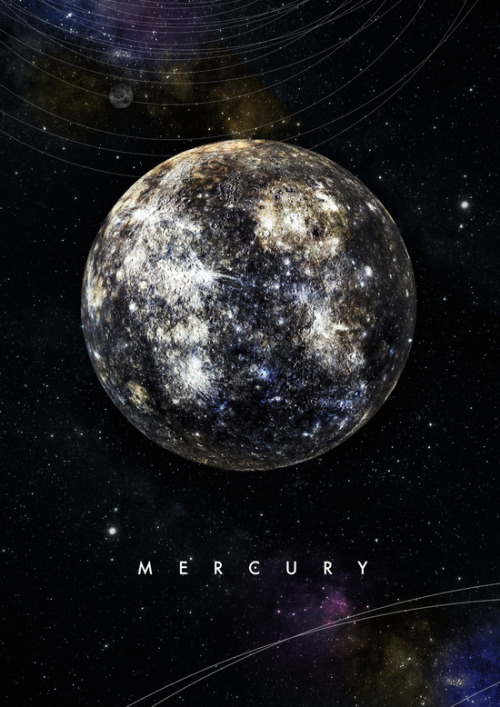
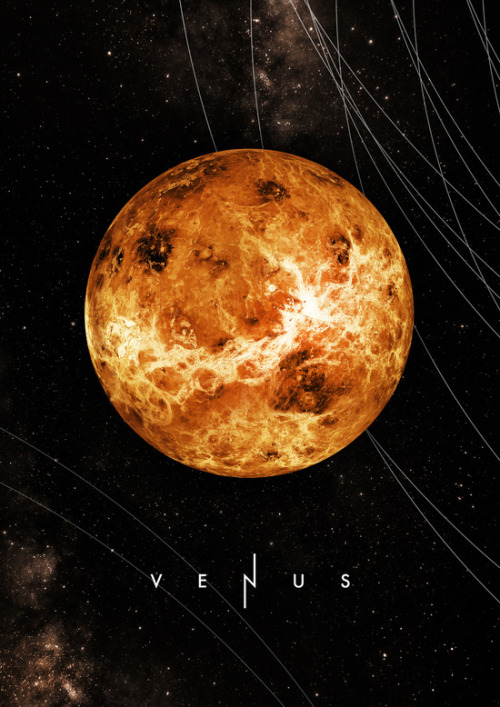
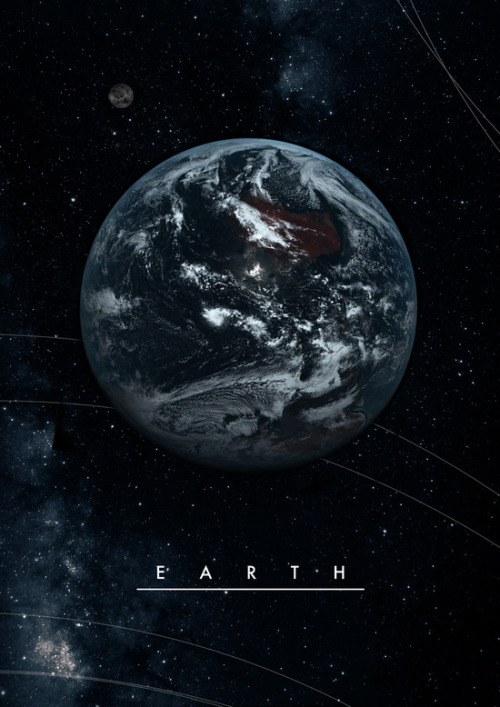
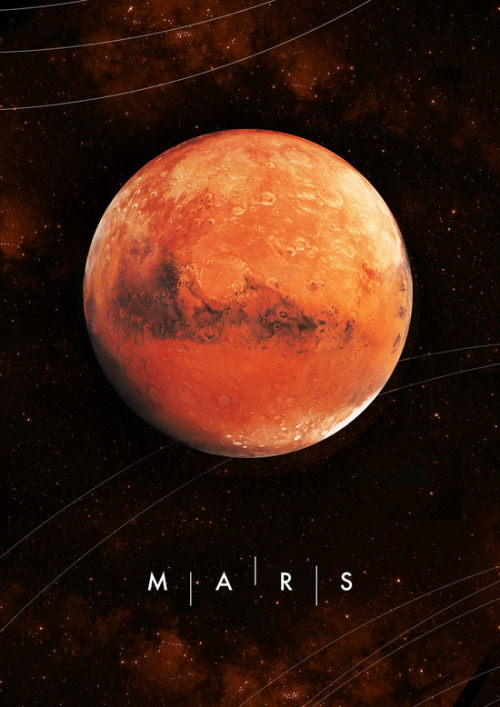
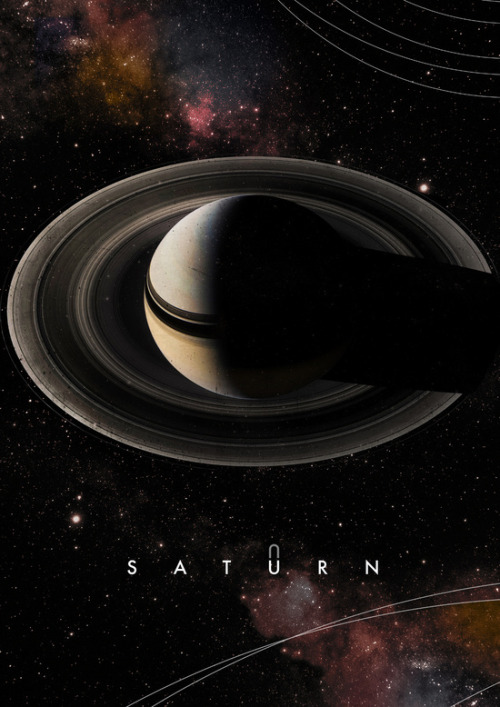
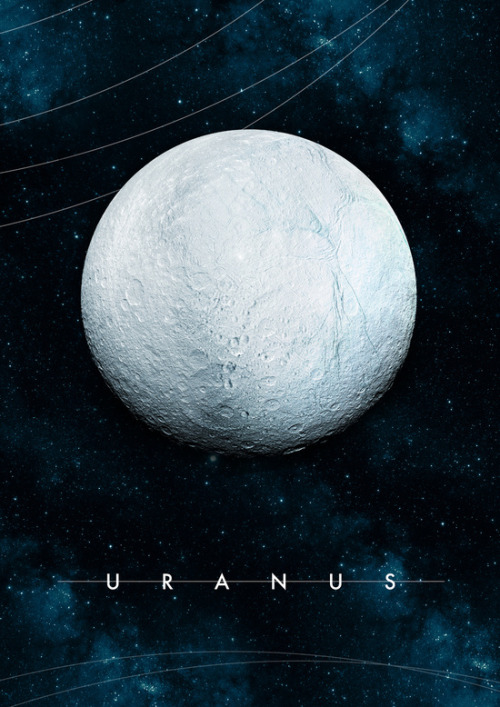
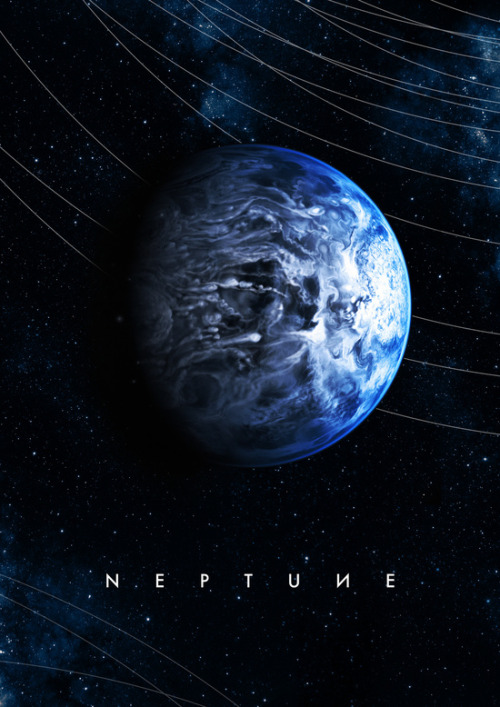

Alexander Pohl
-
 negativedegreeskelvin reblogged this · 9 years ago
negativedegreeskelvin reblogged this · 9 years ago -
 enmity-encountered liked this · 9 years ago
enmity-encountered liked this · 9 years ago -
 yes-lana reblogged this · 9 years ago
yes-lana reblogged this · 9 years ago -
 yes-lana liked this · 9 years ago
yes-lana liked this · 9 years ago -
 drhoz liked this · 9 years ago
drhoz liked this · 9 years ago -
 for-the-glory-of-it-all reblogged this · 9 years ago
for-the-glory-of-it-all reblogged this · 9 years ago -
 herironess reblogged this · 9 years ago
herironess reblogged this · 9 years ago -
 highwarlockk liked this · 9 years ago
highwarlockk liked this · 9 years ago -
 magnetoplasma liked this · 9 years ago
magnetoplasma liked this · 9 years ago -
 missaerospaceblog reblogged this · 9 years ago
missaerospaceblog reblogged this · 9 years ago -
 iamlareina liked this · 9 years ago
iamlareina liked this · 9 years ago -
 theeunseen-one liked this · 9 years ago
theeunseen-one liked this · 9 years ago -
 spacetimewithstuartgary reblogged this · 9 years ago
spacetimewithstuartgary reblogged this · 9 years ago -
 fores-ttrial-blog liked this · 9 years ago
fores-ttrial-blog liked this · 9 years ago -
 thisisnojay liked this · 9 years ago
thisisnojay liked this · 9 years ago -
 megacosms reblogged this · 9 years ago
megacosms reblogged this · 9 years ago -
 allanzo liked this · 9 years ago
allanzo liked this · 9 years ago -
 postorbital-fenestrae liked this · 9 years ago
postorbital-fenestrae liked this · 9 years ago -
 curiositytherover reblogged this · 9 years ago
curiositytherover reblogged this · 9 years ago -
 meiati liked this · 9 years ago
meiati liked this · 9 years ago -
 mysterivmtenebris liked this · 9 years ago
mysterivmtenebris liked this · 9 years ago -
 tsukiyoshi-infinite reblogged this · 9 years ago
tsukiyoshi-infinite reblogged this · 9 years ago -
 tsukiyoshi-infinite liked this · 9 years ago
tsukiyoshi-infinite liked this · 9 years ago -
 centumhistoriarumconfracta-blog liked this · 9 years ago
centumhistoriarumconfracta-blog liked this · 9 years ago -
 dontstepinmypuddle reblogged this · 9 years ago
dontstepinmypuddle reblogged this · 9 years ago -
 daveyboygoliath-blog reblogged this · 9 years ago
daveyboygoliath-blog reblogged this · 9 years ago -
 escvpingrevlity liked this · 9 years ago
escvpingrevlity liked this · 9 years ago -
 sciencealert reblogged this · 9 years ago
sciencealert reblogged this · 9 years ago